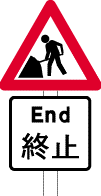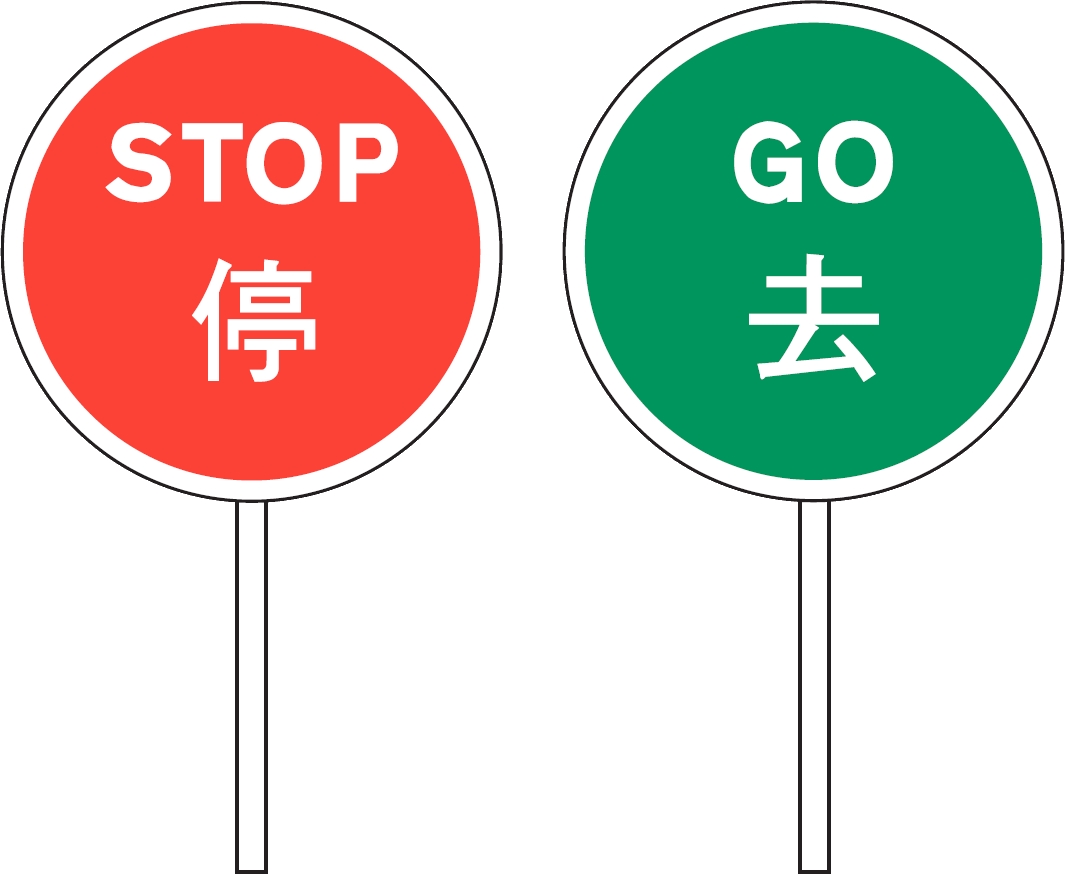Sets of warning signs and sometimes flashing lights will give you warning of works on or near the road ahead. In many cases, normal speeds are impossible when travelling in the vicinity of road works, so you should slow down when seeing the first indication of road works. Be prepared for persons and vehicles working on or near the roadway moving unexpectedly close to or into the open traffic lanes.
Persons responsible for carrying out road works would follow the 'Code of Practice for the Lighting, Signing and Guarding for Road Works' published by the Highways Department (see 'Further References Materials') to set up temporary traffic arrangements and the associated warnings.
Be prepared for the unexpected, especially at night, even if you are familiar with the route or with the temporary traffic arrangements.
The temporary traffic arrangements may change from time to time as the works progress.
The temporary traffic signs and warning lights are often put on stands and may be easily knocked down or displaced.
Look out for pedestrians forced to step onto the roadway because a pavement or footpath may be closed or blocked by road works.
 |
The 'Road works ahead' sign should be the first sign you see as you approach road works or other obstructions on the roadway.
Most road works involve temporary narrowing of the roadway and possibly lane closure or closure of the road itself. Warning signs and informatory signs will help guide you through the road works area or divert you around an obstruction.
(Many of the temporary traffic signs that may be seen at or near road works are illustrated on pages 119 and 120.)
|
 |
Traffic cones and cylinders are used to mark temporary traffic lanes or diversions. You must not drive over them. |
 |
The 'Road works ahead' sign with an 'End' plate marks the end of the road works. |
Temporary traffic control
Temporary traffic lights may be set up to provide traffic control in/near a road works area. The lights may be used at a junction, a site access or where the roadway is narrowed to a single track for two-way traffic.
A 'Traffic lights ahead' sign may be used to warn you of temporary traffic lights (see sign 22 on page 119).
At temporary traffic lights, a temporary traffic sign (see below) may be used instead of a 'Stop' line. You must stop and stay before the sign if the red, or red and amber lights are showing (see pages 106 to 108 for the meaning of traffic light signals).
 Manually operated 'Stop/Go' signs may be also used for control of one-lane-two-way traffic.
Manually operated 'Stop/Go' signs may be also used for control of one-lane-two-way traffic.
'Stop' and 'Go' signs - if the 'Stop' sign is showing, you must not drive past the sign; if the 'Go' sign is showing, you may go if the way is clear.
 |
Warning of temporary traffic control by 'Stop/Go' signs ahead |
Road Works



 Manually operated 'Stop/Go' signs may be also used for control of one-lane-two-way traffic.
Manually operated 'Stop/Go' signs may be also used for control of one-lane-two-way traffic.